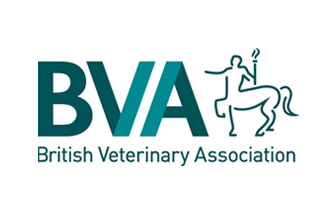Advertising guidelines - Pets in advertising: A social concern
Good practice guidance for the responsible use of pet animals in advertising.
From television advertising to marketing materials in veterinary practices, the prominent visibility of pets has the potential to normalise hereditary defects, poor welfare, and inappropriate diet and housing, as well as drive demand for certain breeds with physical and behavioural problems that are not always recognised by the public.
Last revision: 2018
Edition: 1
Publisher: BVA
Number of pages: 32
Format: PDF 5.1MB (open access)
Use our template letter to write to encourage big brands to use animals responsibly in advertising.
Under the UK Animal Welfare Acts, pet owners have a legal responsibility to ensure that the health and welfare needs of their animals are met. With pet owners and the general public increasingly exposed to images of animals in marketing campaigns across a range of media, it is paramount that both advertisers and veterinary professionals present their consumers and clients with messages that encourage responsible pet ownership and positive animal health and welfare outcomes.
BVA’s Pets in advertising: A social concern aims to provide good practice guidance on the responsible use of pet animals in advertising, marketing and communications materials. The guidance covers all representations of pet animals in advertising or communications materials that may influence owner behaviour, including the use of cartoon and computer-generated images (CGI). The recommendations made in these guidelines are intended to support decision-making on the use of animals in marketing materials and to enable advertisers to promote positive animal welfare through the appropriate use of animal imagery.
The five welfare needs – a framework
To ensure responsible messaging, BVA recommends that all animal imagery in advertising depicts pets in situations that meet their welfare needs as far as possible.
Both advertisers and veterinary professionals should ask themselves the following questions before publishing marketing materials depicting pets:
- Is the animal shown in a suitable environment (place to live) for its species and/or breed?
- Is the animal shown eating food or near food that is non-poisonous, proportionate to its breed size and conducive to a nutritionally balanced diet?
- Does the animal shown have enough space and/or appropriate enrichment materials to exhibit normal behaviour?
- Is the animal shown housed with, or apart from, other animals appropriate for its species?
- Does the animal show any physical characteristics that negatively impact on its health and/or cause suffering? Eg. bred-in characteristics (extreme conformation) and surgically altered characteristics (such as cropped ears or docked tails).
- Is the animal shown safe? Ie is the animal at risk from injury, pain, and stress in the scenario presented?
BVA recognises that not all images will depict scenarios where it is possible to address each of the five welfare needs, eg if an animal is shown as a ‘cut out’ or if an animal is not situated around food. With this in mind, it is important to emphasise that this framework is intended to encourage decision-making that is mindful of the different welfare needs that different scenarios imply, as opposed to recommending that all five welfare needs must be captured in all imagery.

